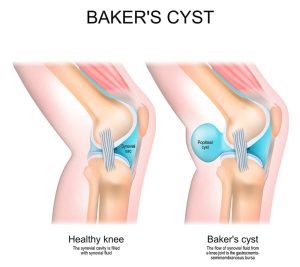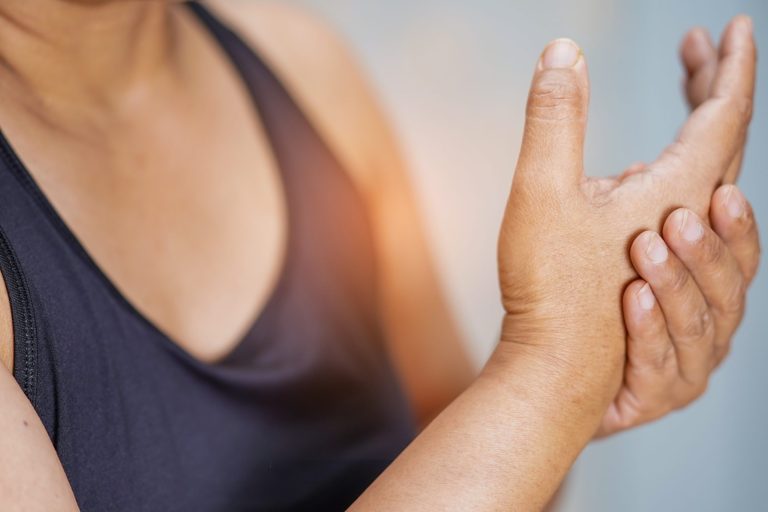

De Quervain’s Syndrome is a painful condition that affects the wrist, causing discomfort along the thumb-side of the wrist. It involves the thickening and swelling of the tendons and their sheaths, specifically the Extensor Pollicis Longus and Extensor Pollicis Brevis Tendons, which are responsible for thumb movement. The condition typically results in pain during activities such as grasping objects, rotating the wrist, or moving the thumb away from the hand.
At York-Med Physiotherapy & Wellness Centre, we specialize in the diagnosis and treatment of De Quervain’s Syndrome. Our team of registered physiotherapists uses evidence-based methods to develop a comprehensive, individualized treatment plan designed to relieve pain, restore function, and prevent future flare-ups.
De Quervain’s Syndrome is commonly caused by repetitive movements involving the thumb and wrist, such as pinching, grasping, or lifting. These movements can lead to irritation and inflammation of the tendons and their sheaths. New mothers are particularly susceptible, as frequent lifting of a baby with an extended thumb can trigger the condition. Other activities or professions that involve repetitive wrist or hand movements, such as typing, gardening, or assembly line work, can also increase the risk.
Symptoms of De Quervain’s Syndrome
The symptoms of De Quervain’s Syndrome can range from mild to severe and typically include:
Pain: A sharp or dull ache at the base of the thumb, which worsens with movements such as grasping, pinching, or rotating the wrist.
Swelling: Mild to moderate swelling around the base of the thumb, especially after engaging in thumb or wrist activities.
Weakness: Difficulty performing actions that require thumb strength, such as gripping or lifting objects.
Limited Range of Motion: Restricted movement of the thumb and wrist, especially during pinching or grasping motions.
Physiotherapy Management of De Quervain’s Syndrome
At York-Med Physiotherapy & Wellness Centre, our registered physiotherapists offer an effective, non-invasive treatment approach for De Quervain’s Syndrome. Our treatment plans are customized based on a detailed assessment of your condition, lifestyle, and specific needs.
Pain Management: Techniques such as ice therapy, ultrasound, or manual therapy to reduce pain and inflammation around the thumb and wrist.
Soft Tissue Mobilization: Manual techniques designed to release tension in the affected tendons and restore their natural mobility.
Stretching Exercises: Exercises that focus on improving flexibility in the wrist and thumb, helping to reduce the strain on the tendons.
Strengthening Exercises: Targeted exercises to strengthen the muscles surrounding the wrist and thumb to improve stability and prevent future injuries.
Splinting: In some cases, we may recommend a thumb spica splint to immobilize the thumb and wrist, allowing the tendons to heal and reducing strain during daily activities.
Why Choose York-Med Physiotherapy for De Quervain’s Syndrome Treatment?
At York-Med Physiotherapy & Wellness Centre, we are committed to providing the highest standard of care to help you recover from De Quervain’s Syndrome. Our team of experienced physiotherapists takes a holistic approach to treat the root causes of your symptoms and restore proper function in your wrist and thumb. We use evidence-based treatments and advanced techniques to ensure optimal recovery and prevent recurrence.
If you are experiencing symptoms of De Quervain’s Syndrome or suspect you may have this condition, don’t wait to seek treatment. York-Med Physiotherapy & Wellness Centre offers effective, personalized treatment plans tailored to your specific needs. Contact us today to schedule your De Quervain’s Syndrome assessment and begin your recovery journey. We are here to help you regain pain-free movement and return to your daily activities.
© 2020 York-Med Physiotherapy and wellness center | Richmond Hill & Vaughan. All Rights Reserved.
Designed by Magham Agency